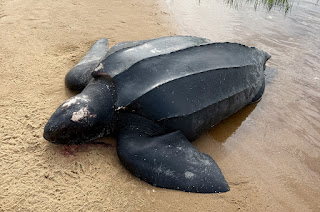Delicate. Serene. Nostalgic. Few colors capture the imagination quite like Robin Egg Blue. It’s not just a shade—it’s an emotion, a memory, a whisper of spring mornings and hidden nests. Whether you’ve seen it on a painted wall, a Tiffany’s box, or nature’s own design, this soft turquoise-blue hue speaks volumes without ever raising its voice.
But what makes Robin Egg Blue so special? Let’s crack open the story.
🐦 A Gift from Nature
The name comes from the American Robin, whose eggs are a distinctive, vibrant blue. Tucked safely in woven nests and surrounded by chirping hope, these eggs became symbolic of new life, rebirth, and fragility.
Unlike most bird eggs which are white or speckled, robin eggs have this unique blue-green tone—scientifically attributed to the pigment biliverdin, deposited on the eggshell as it’s laid. The intensity of the color can even indicate the health of the female robin. In nature, nothing is random.
🎨 A Color That Captures Emotion
Robin Egg Blue is hard to pin down. It dances between aqua, turquoise, and teal, yet keeps a muted softness that makes it versatile and emotionally rich.
- In design, it evokes calmness, clarity, and femininity without being overly sweet.
- In fashion, it whispers elegance and softness, often paired with vintage or spring styles.
- In branding, especially with Tiffany & Co., it represents luxury, timelessness, and desire.
In many cultures, blue is the color of protection, peace, and healing. When softened into robin egg blue, it feels like a lullaby for the eyes.
🛋️ Robin Egg Blue in the Home
Paint a wall robin egg blue and watch a room exhale. It’s a popular color for kitchens, nurseries, and reading nooks—spaces meant for rest, care, and reflection.
Paired with white, it feels crisp and airy. With gold or brass, it leans glamorous. With earth tones, it becomes natural and grounded. Robin egg blue is a chameleon—transforming with its environment, yet always standing calm and proud.
🧠 Color Psychology: Why We Love It
Robin egg blue is associated with:
- Tranquility – It has the calming effects of blue but with a fresh, revitalizing twist.
- Innocence – Like the egg it’s named after, it suggests new beginnings, vulnerability, and protection.
- Hope – The egg itself is a symbol of potential, and its soft color reinforces a gentle sense of optimism.
It’s no coincidence that we often see this color in baby showers, wedding decor, and springtime celebrations. It feels like a fresh start.
💎 Tiffany Blue vs. Robin Egg Blue
You’ve likely seen a similar shade on the iconic Tiffany & Co. box—a symbol of elegance and sophistication. Tiffany Blue, trademarked and custom-mixed, is often considered a variant of robin egg blue, though slightly more saturated. The brand chose this color for its beauty and association with luxury—and it worked. Just seeing that color can cause a thrill of anticipation.
But while Tiffany Blue is about glamour, Robin Egg Blue is more grounded—earthy, maternal, natural. One is sparkle; the other, soul.
🌱 A Shade of Spring, a Mood of Memory
Robin Egg Blue brings to mind:
- A robin’s nest tucked into a tree.
- A grandmother’s teacup collection.
- A cozy porch with painted rocking chairs.
- A vintage bicycle riding through April wind.
It’s not just a pigment—it’s a feeling. Gentle yet steady. Soft yet emotionally strong. It tells us to breathe, to hope, to begin again.
Final Thought
In a world of loud reds and commanding blacks, Robin Egg Blue is a quiet anthem. It doesn’t shout, but it stays. It comforts. It reminds us of nature’s elegance and the simple beauty of life breaking through the shell.
So next time you see it—in a paint swatch, a jewelry box, or a robin’s nest—pause. You’re not just looking at a color. You’re looking at peace, at possibility, at the sky cradled in a shell.













